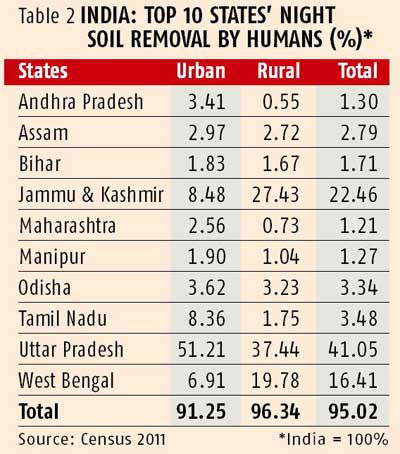Nirmal remained unattained. Now we want to graduate to swachh, also a laudable objective if its broad contours are to be imagined. To begin let me ask rather obviously, was there any centrally sponsored nirmal scheme that went to local - as opposed to state - governments, which central ministries were responsible, has there been any impact assessment of programmes undertaken under nirmal, and have states been pursued regarding their promise to set up state finance commissions to ensure constitutionally guaranteed financing of municipal and panchayat programmes? Or is swachh to turn out to be another unfulfilled wish?
It is one thing to expect the middle class not to litter Indian streets. But the depth of the problem lies elsewhere. Unless all Indians are assured a basic right in relieving themselves decently and in privacy, that is, have access to at least septic tank or slab/open pit, leave alone modern latrines, how could they be expected to throw their garbage in bins, presuming, of course, that adequate number of bins are provided?
It is one thing to expect the middle class not to litter Indian streets. But the depth of the problem lies elsewhere. Unless all Indians are assured a basic right in relieving themselves decently and in privacy, that is, have access to at least septic tank or slab/open pit, leave alone modern latrines, how could they be expected to throw their garbage in bins, presuming, of course, that adequate number of bins are provided?



Thus, the statistics for India on sanitation, in the above discussion on latrines in particular, are no less than shocking. Should any policymaker expect swachh Bharat from those who suffer such ignominy through life? The answer is decidedly in the negative, and even less so from those who hand carry excreta through urban and village streets, not unusually the subject of mockery for being of a low caste. These very fundamental challenges have to be addressed through rational allocation of financial resources to the appropriate level of government, ex ante and ex post impact assessment (IA) and tight monitoring and evaluation (M&E) of an intelligently designed Swachh Bharat programme.

In sum, Swachh Bharat is a correct policy revival but will fail unless buttressed by a robust, palpable implementation structure. The prime minister has to show his mettle by revealing his plan to make India clean and smart. Luckily, there exists a handful of municipalities from where one could derive inspiration. One such is the 2013-14 Budget of Berhampur Municipal Corporation in Ganjam district of Odisha that details its Budget allocation in garbage collection, solid waste management, drainage, public toilet, water supply, housing, roads and bridges, street lighting, parks, livelihood, infrastructure and project assistance. It elaborates that it wants mandatory public disclosure of documents and allocation, to ensure citizen participation - common in developed societies - increase allocation for the urban poor, and for basic services including water, garbage, drainage and public toilets, and implement a development outcome budget to ensure effective government management and accountability. It is rejuvenating for it sets an example for other local governments to follow. Central government bureaucrats should pick up such examples consistently and give concrete shape to the prime minister's vision though the leadership in this endeavour has to continue to be his.
http://www.business-standard.com/article/opinion/agnikalam-anatomy-of-aswachh-bharat-and-alchemy-to-swachh-114121600972_1.html
No comments:
Post a Comment